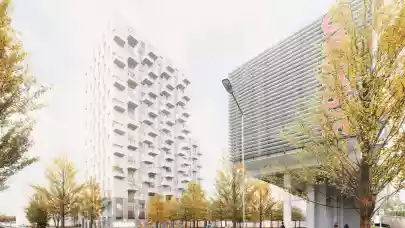Refurbishments of ageing office buildings in the CBD accounted for only 20% of the district’s total office supply in the years 2010-2016. This was due largely to a relatively large pool of development lands available for new office projects which dominated the Warsaw market in terms of office supply. That period saw nearly one-fourth of the CBD’s current office stock developed.
Most development plots were secured by developers for new projects some time ago. By 2020, more than 600,000 sqm of office space is expected to be delivered to the city centre market. Office schemes under construction include “Varso Place”, developed by HB Reavis from Slovakia near the junction of Chmielna Street and Jana Pawła II Avenue, Golub Gethouse’s “Mennica Legacy Tower” at the crossroads of Prosta and Żelazna streets, and “J44”, developed jointly by Commerzreal and S+B Gruppe AG at 44 Jerozolimskie Avenue, a site where Universal once stood. This means that as in London or New York, mutatis mutandis, the highest concentration of businesses is the very heart of Warsaw’s city centre and its immediate vicinities such as the eastern part of Wola or Powiśle.
In addition to new developments in the city centre, there is a lot going on in this market in terms of upgrading of historical buildings and schemes developed before 2000. The last two years saw an increase in upgrading and revitalisation projects. Examples include Hala Koszyki, Ethos at Trzech Krzyży Square or EC Powiśle, which is currently under construction.
Revitalisations are being carried out to bring disused properties back to life and – by combining an appreciation of the past and modern functionality – to create unique places in their respective environments which will benefit property owners, users and city inhabitants alike. Outdated buildings, once upgraded to present-day technological standards, will be able to compete with new developments for tenants. Refurbishments and revitalisations are expected to provide approximately 200,000 sqm of office space by the end of 2020.
The key driver behind upgrading and revitalisation projects which require major capital expenditure is an opportunity to add value to the property. Prime commercial buildings featuring appropriate technical standards and timeless designs remain the most attractive and sought-after investment products. In addition, property owners intending to sell their assets want to take advantage of the record-high investor activity. In 2017, investment volumes on the Polish commercial real estate market totalled €5.0 billion, close to 2016’s figure of approximately €5.2 billion.




